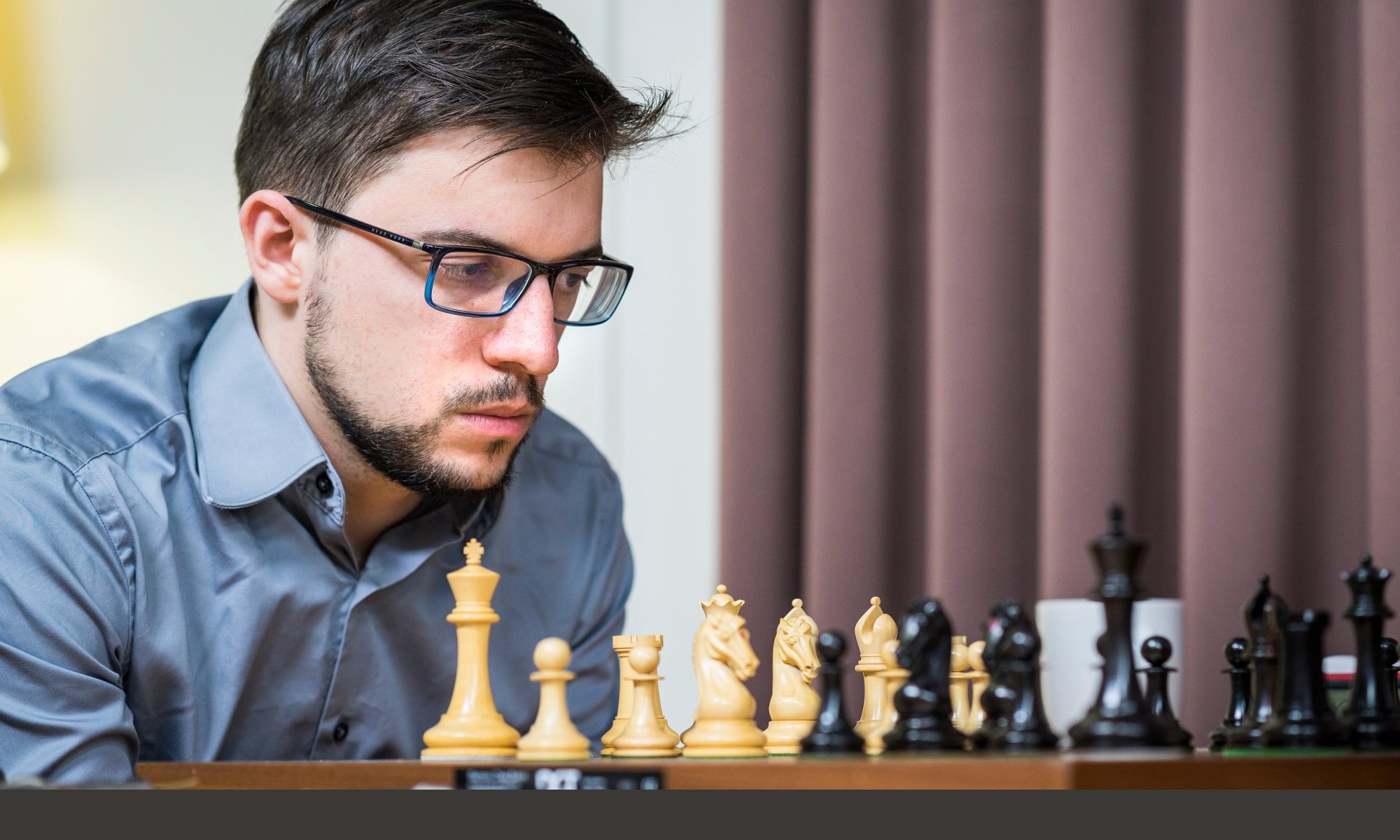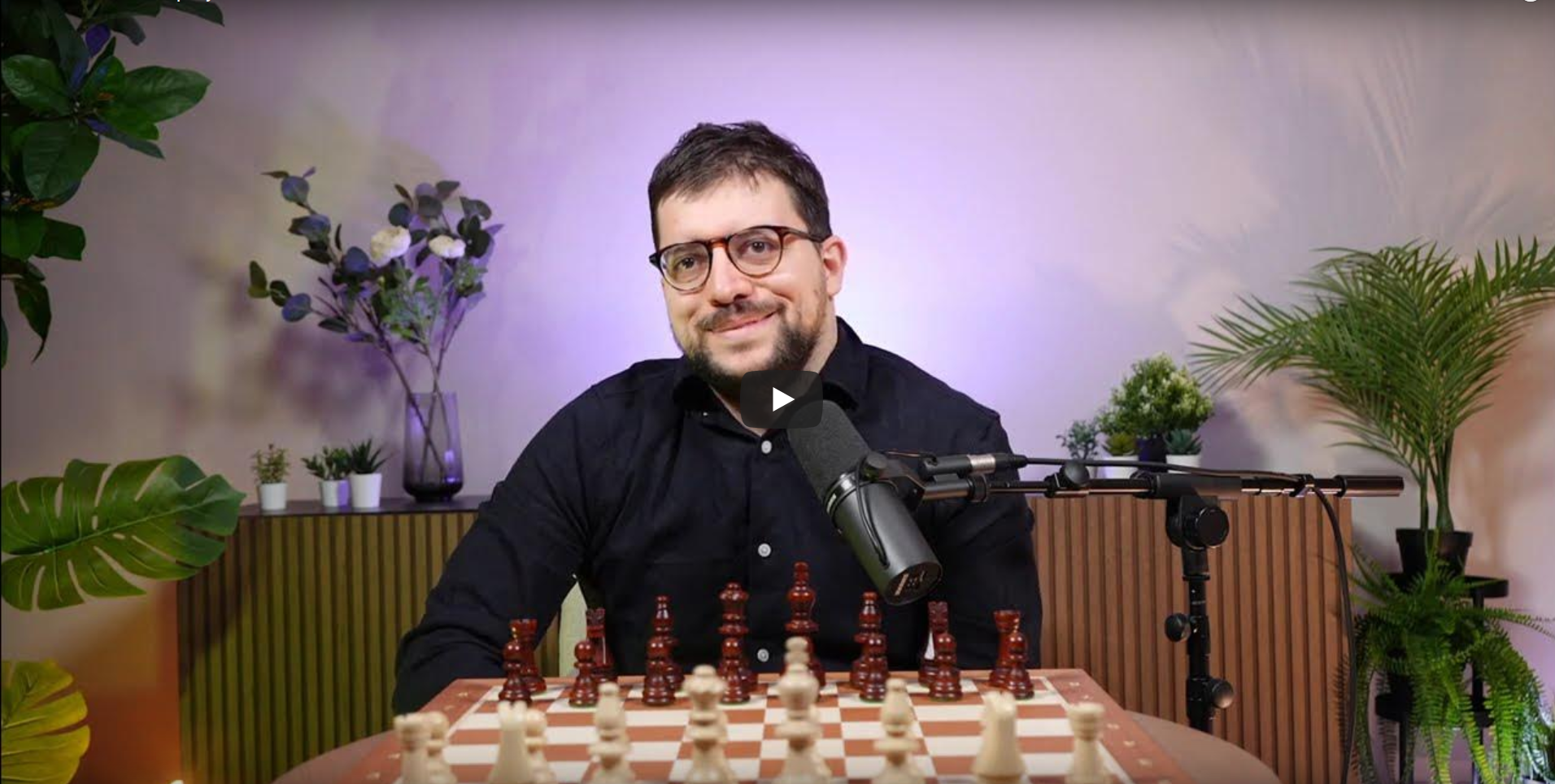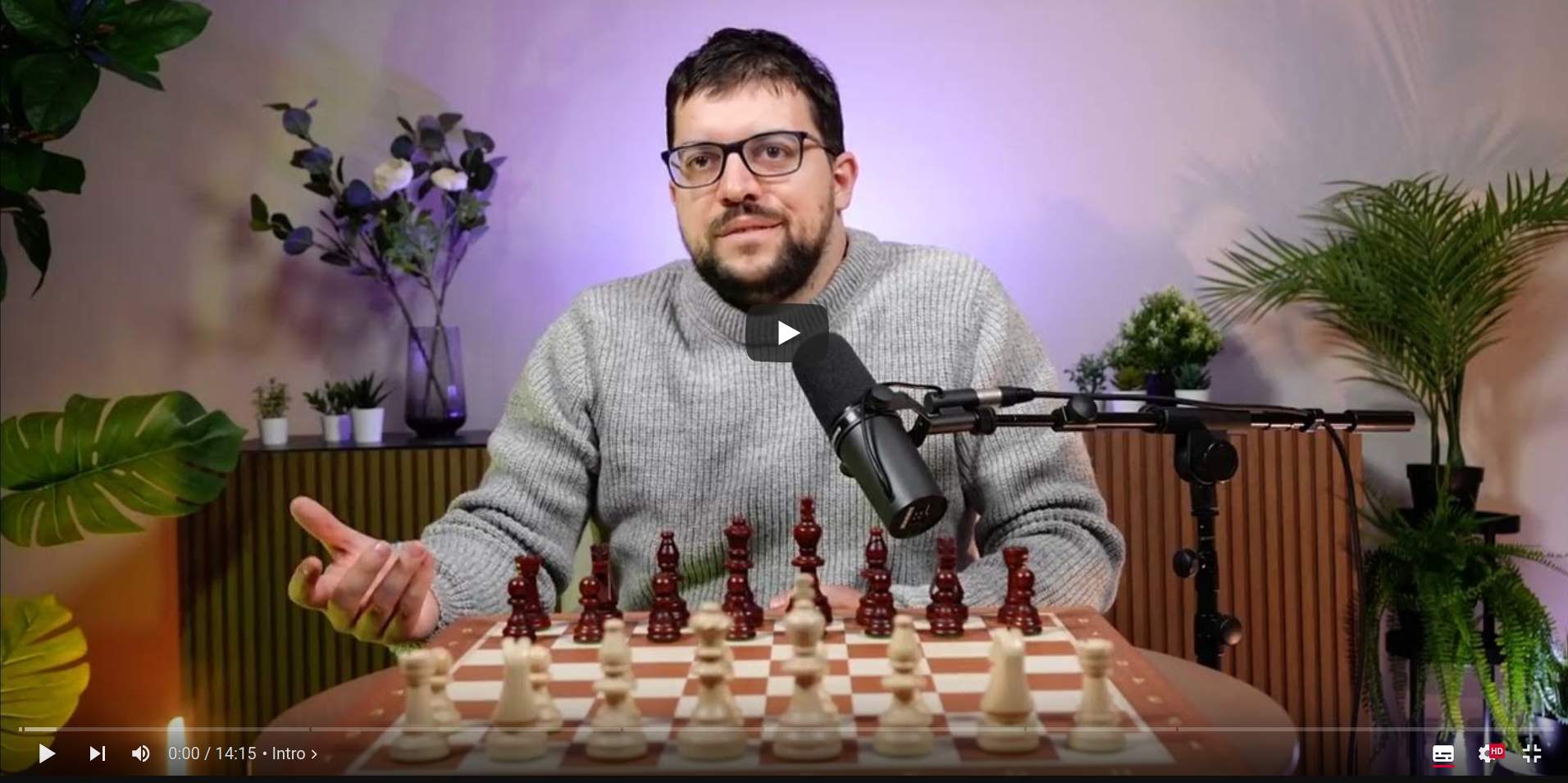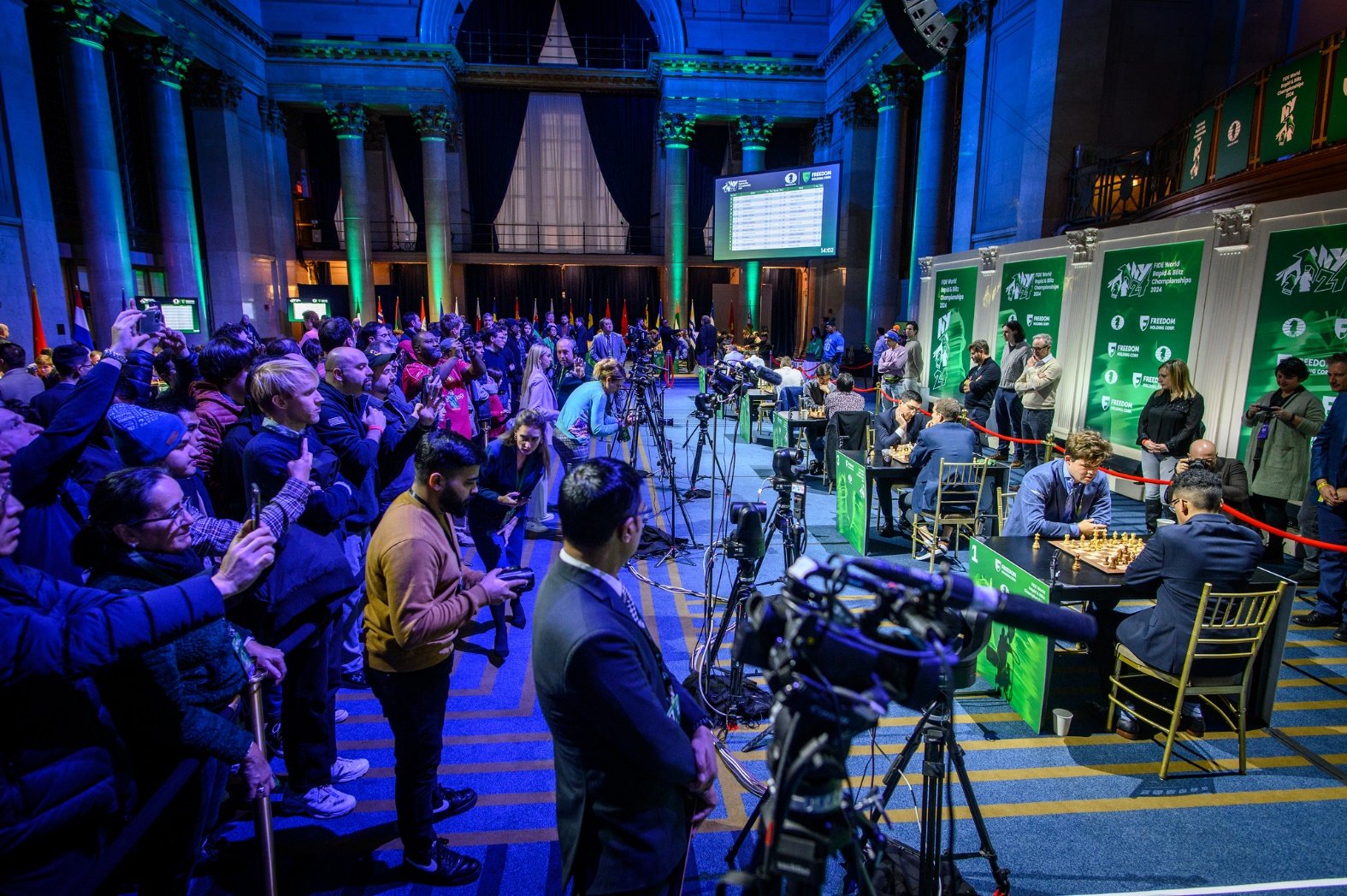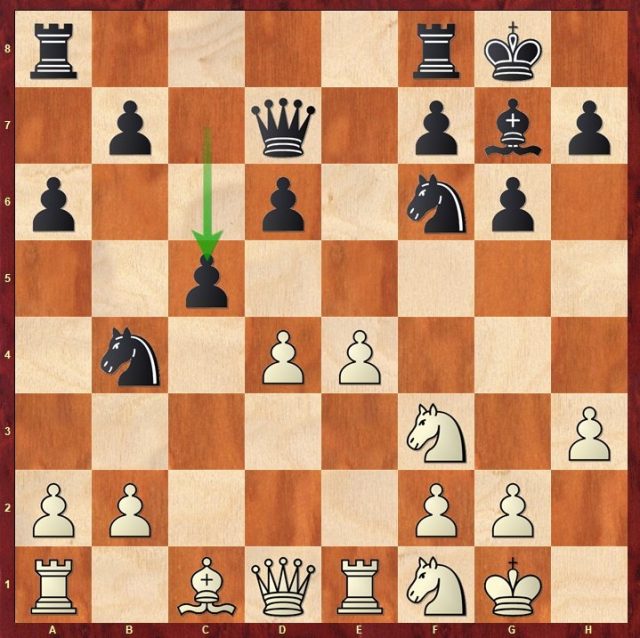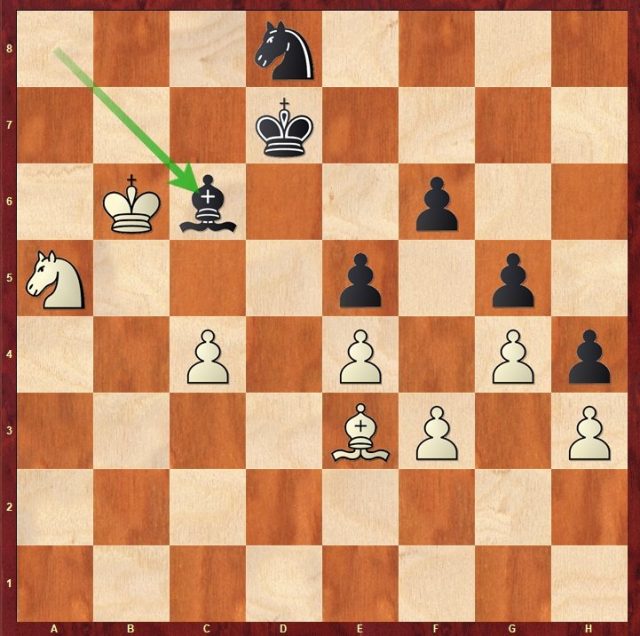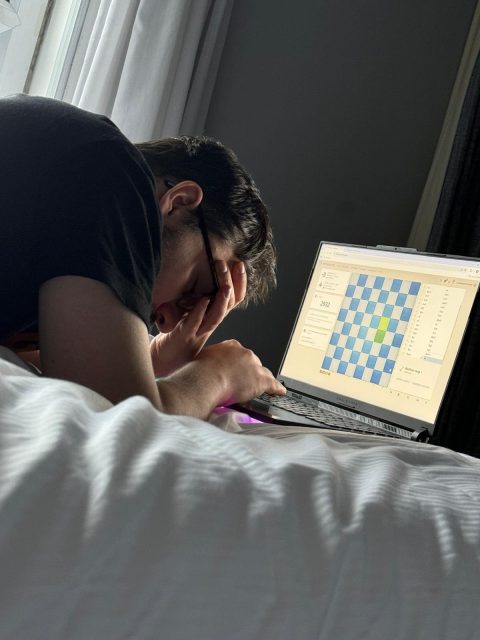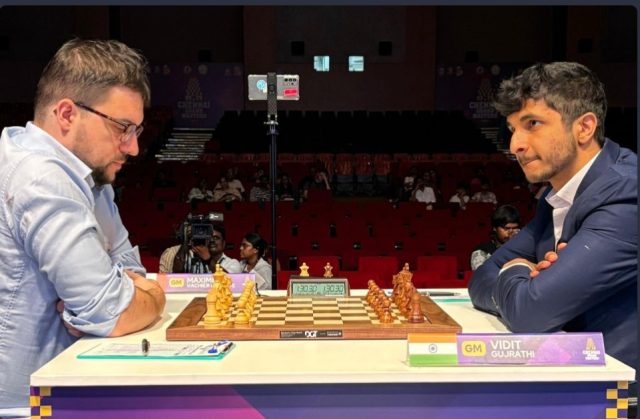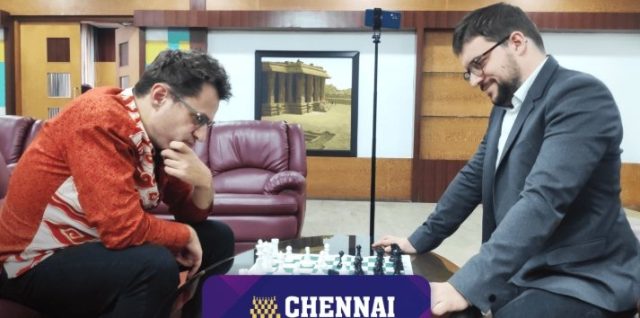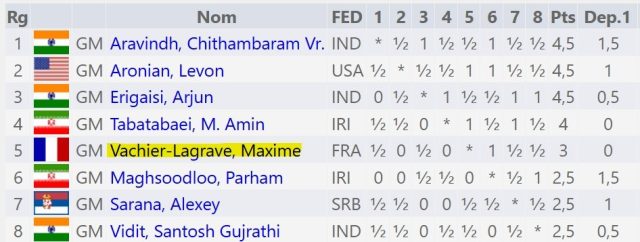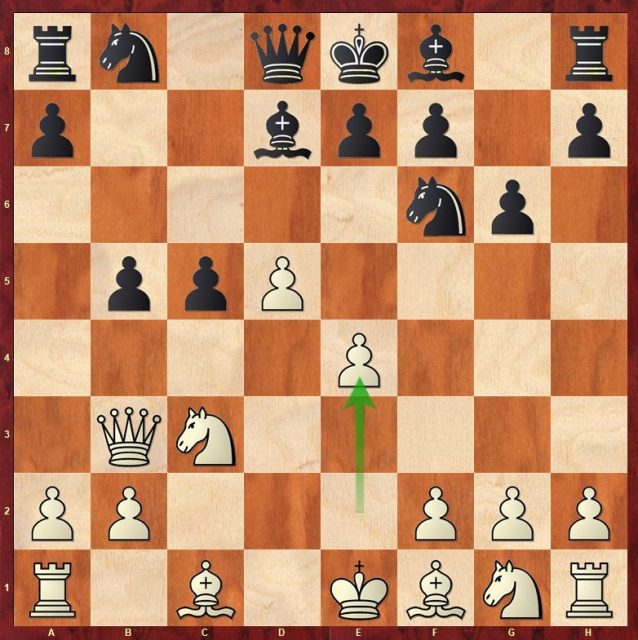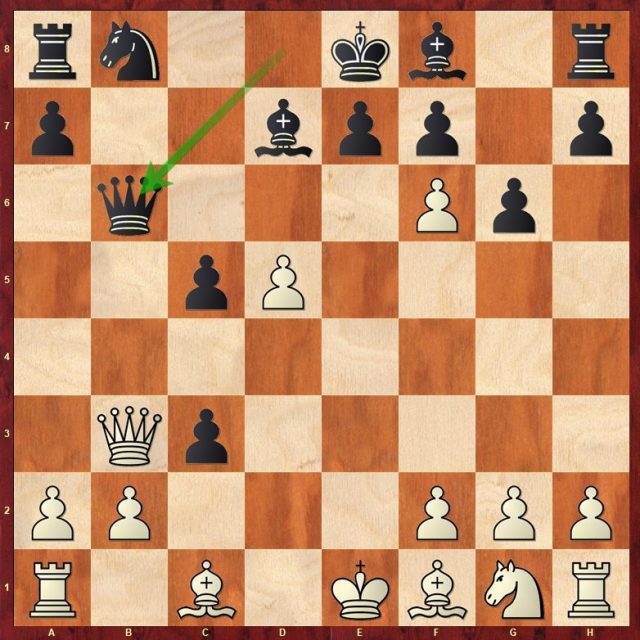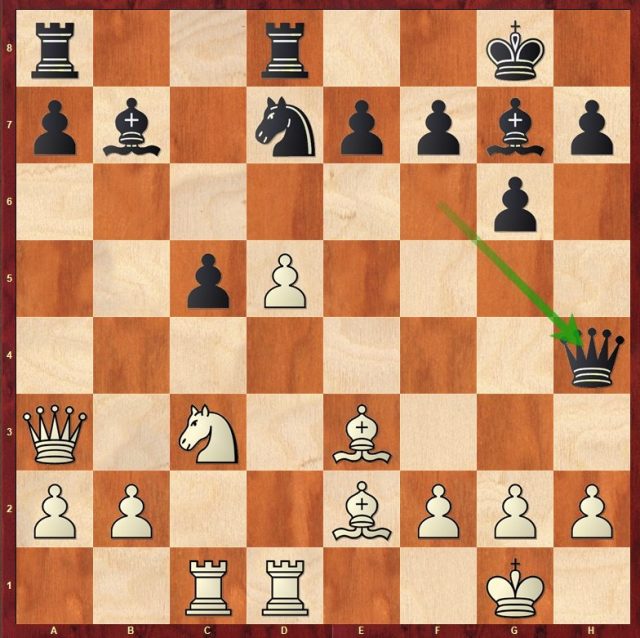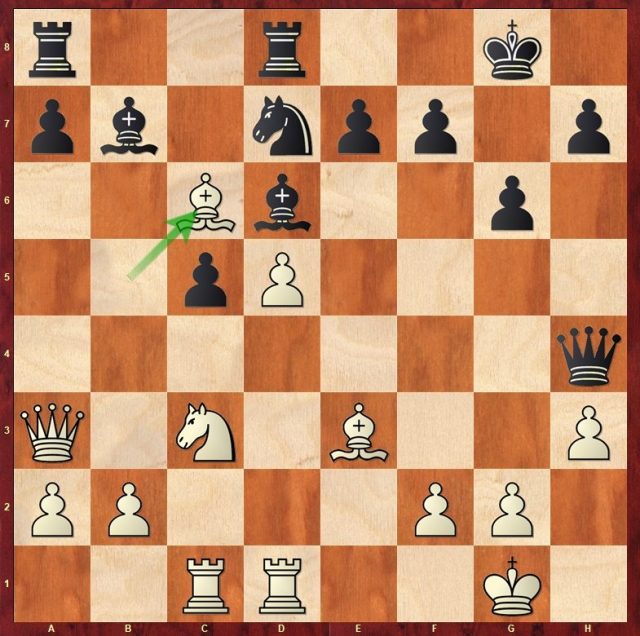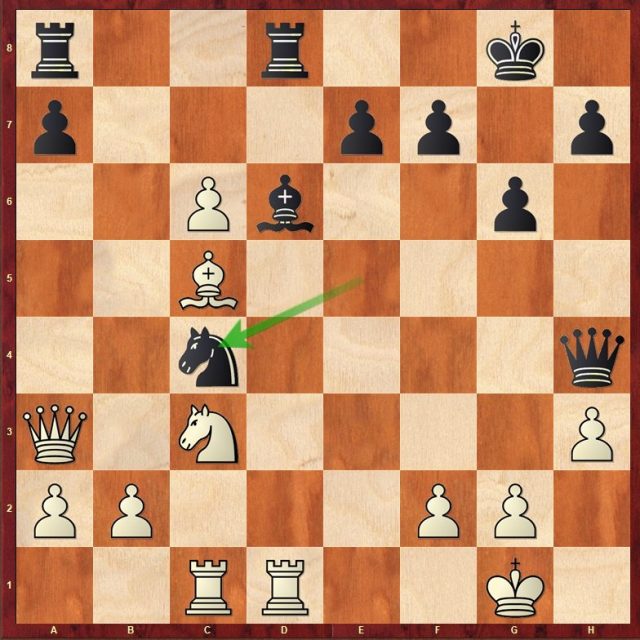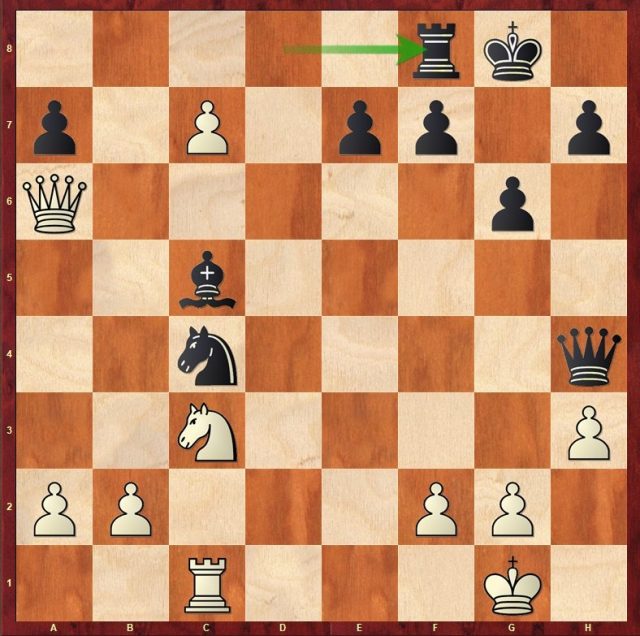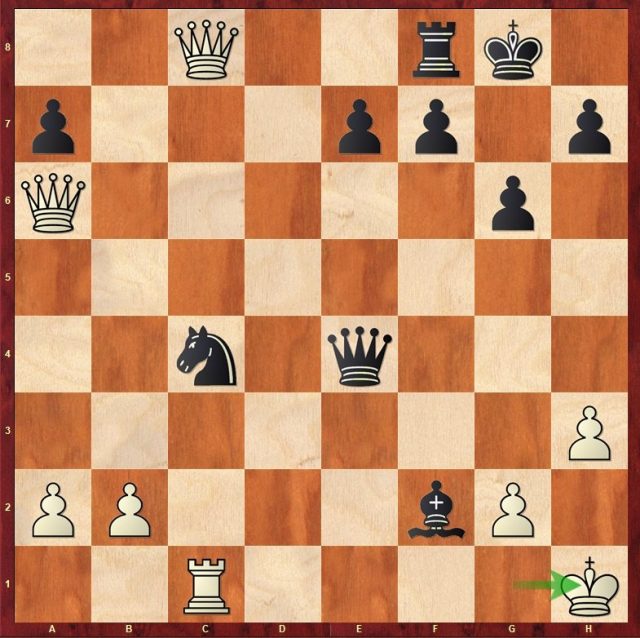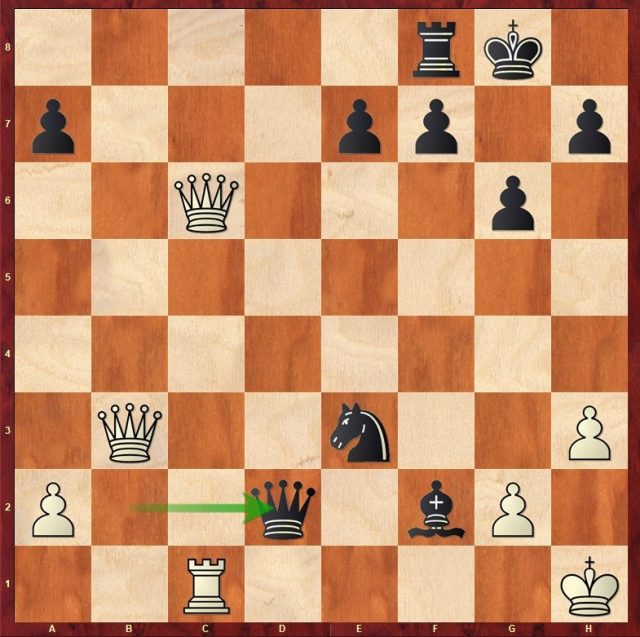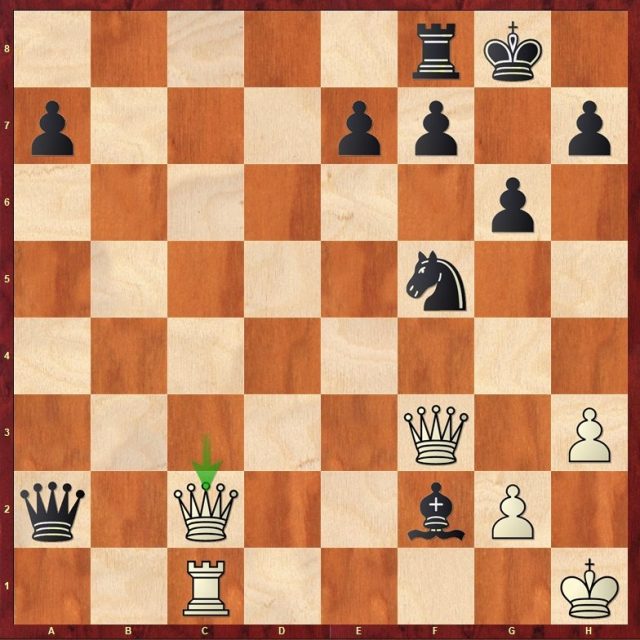The tournament season got off to a flying start with the Freestyle Chess Paris, second leg of an innovative Chess 960 circuit format that offered me a wildcard to join a field of 12 players. The venue was superb, in the heart of the Parc de Vincennes, the level of play very high, and I was looking forward to rubbing shoulders with a format that was still new to me.
Freestyle discovery
The tournament began with Rapid games in Chess960, followed by Classical games – a real novelty for me. Unlike traditional formats, the theoretical preparation here is non-existent. Less time spent working on variations… but more intensity during the games! You can easily consume 30 to 40 minutes on the very first moves, as they determine the rest of the game.
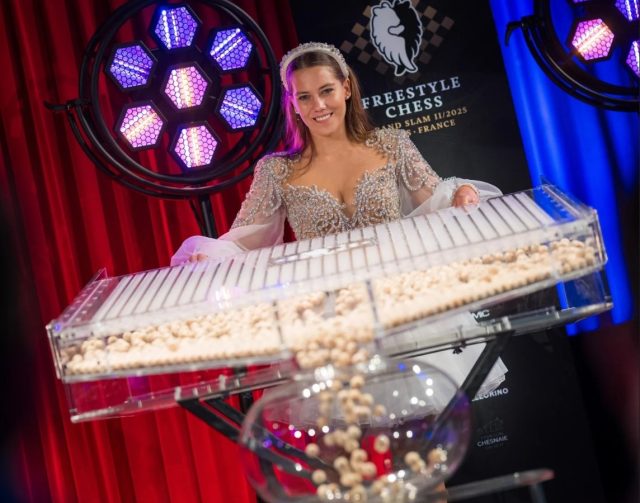
A convincing Rapid Qualifier
Having returned from the Austrian Team Championship that same morning (see box), I followed up with a rather intense media day in Vincennes. After a rather laborious first day in the Rapid format, and three very difficult first rounds, I managed to reverse the trend the following day, putting in a string of good performances and qualifying for the final phase without too many scares – but with a hint of luck, I must admit.
Eliminated by Caruana
In the quarter-finals, I had the « choice » between Caruana and Nakamura. A Cornelian choice, of course 😊. In the end, I opted for Caruana, but the match didn’t go as well as I’d hoped.
In the first game, I quickly lost the thread in the opening; despite a good good come-back in the middlegame and a clear advantage, I couldn’t conclude. In the second, an early strategic decision cost me dearly and I couldn’t recover. In Freestyle, there are always decisions that are difficult to make: do you keep the balance, or try something a little different because the pieces are not placed in the same way and this changes certain configurations, which are more natural in classical chess?
Ranking matches and tournament atmosphere
Eliminated from the race for first place, I faced Abdusattorov and then Erigaisi for the places of honor. The result was a win and a loss.
In terms of atmosphere, the tournament was really enjoyable, despite one small regret: the absence of an on-site audience, which would have added a nice extra energy. Fortunately, a few friends of mine were able to drop by, which I was delighted about.
Pre-game reflection: a point worth revisiting?
A word on the format: the 10 minutes of common reflection before each game is an interesting idea for the public, but it can detract from the variety of possibilities. Players often agree on similar openings, which limits creativity. In contrast, at the Freestyle Open in Germany which immediately followed, there was no such thing, and the openings were far more varied. I was even the only one to play 1.b4 in the last round!
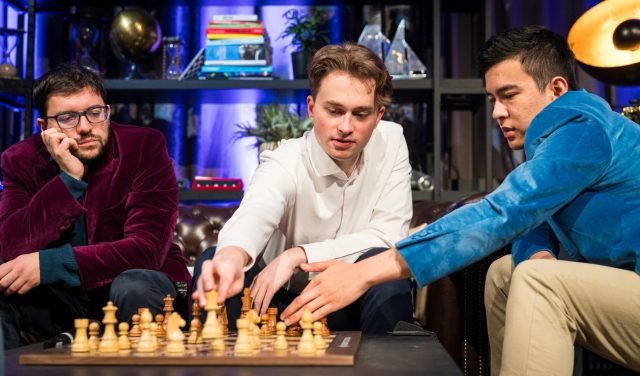
6th place in Paris, followed by Karlsruhe
So I finished in 6th place in Paris, a fair result without being exceptional. The rapid part went well, but the Classical games revealed a few shortcomings – logical for a first-timer.
As I’ve just mentioned, we were then off to Karlsruhe for a very busy Open, with two games a day. An intense format, inevitably exhausting. A defeat in round 2 seriously compromised my chances. I reacted well, but on the last day, two draws instead of two victories deprived me of qualification for the next Grand Slam in Las Vegas (July 15-19).
Nothing’s lost though: an online qualifying tournament is planned, so I’m staying focused 😊.
Despite everything, the Karlsruhe Open was a great time: over 3,000 players, an electric atmosphere, lots of photos and autographs (even if I declined during the games!).
Here are some interesting positions from my games in the two Freestyle tournaments:
FREESTYLE PARIS
MVL-NAKAMURA
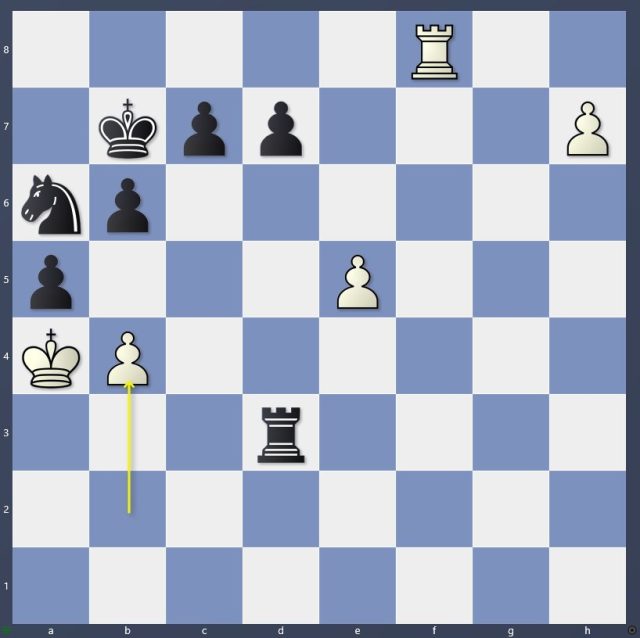
In this completely hopeless position for white, Hikaru missed the final touch 44…c6!, and checkmate by …b5+ and …Ra3 is absolutely unstoppable! But even after 44…axb4 45.h8=Q, it was still time to play 45…c6!. But Hikaru got the idea too late, and after 45…Ra3+? 46.Kb5 Rc3 47.Ka4 Ra3+ 48.Kb5 Rc3 49.Ka4 c6, white had the resource 50.Rb8+! Nxb8 51.Kxb4, and although the defense remains delicate, the chances of a draw are still there (1/2, 77 moves).
MVL-CARUANA
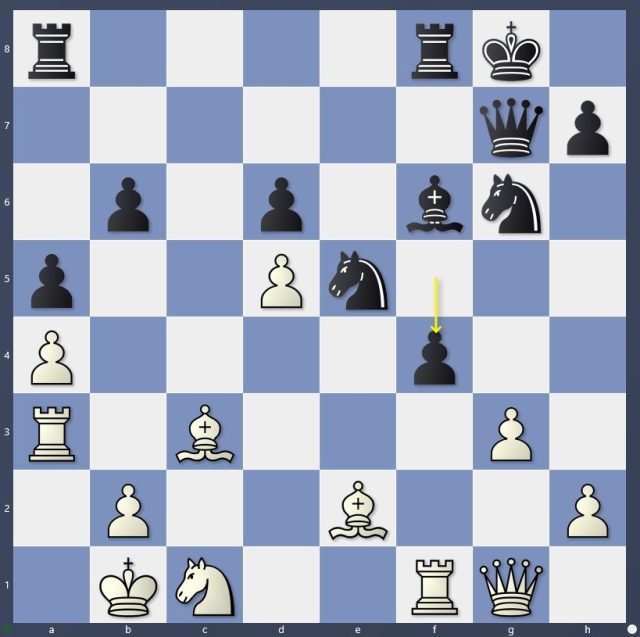
My position is very superior, and Fabiano went into survival mode with the move 22…f4. Unfortunately, I made a big miscalculation here with 23.gxf4? completely forgetting that 23…Nxf4! was possible, after which black exchanges Queens and relieves his position considerably (1/2, 43 moves).
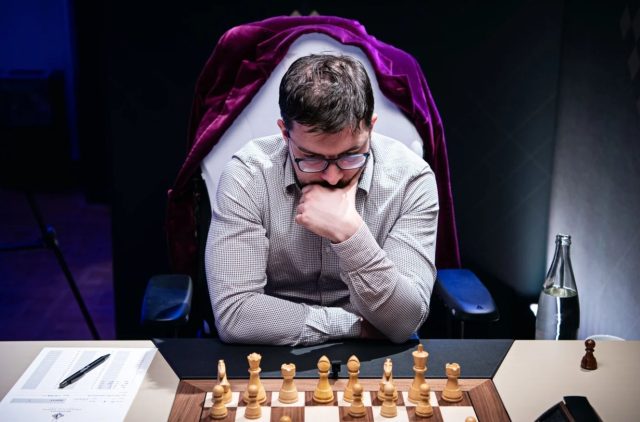
ABDUSSATOROV-MVL
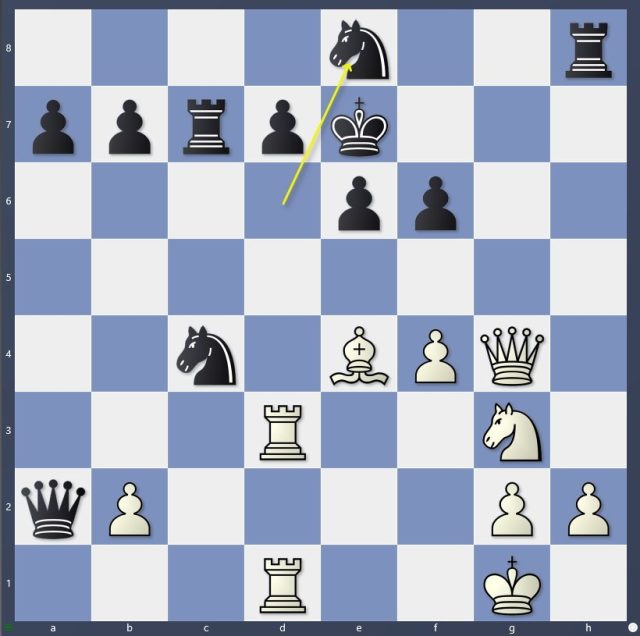
A remarkable game from the young Uzbek. 26.Bg6! the first of a series of four bishop moves on the same square, each time proving to be the only moves towards victory. A truly spectacular occurrence! 26…Ncd6 27.Ne4 Nxe4 28.Bxe8 Kf8!? (an ingenious defense because 29…Rxe8 30.Qg7+ or 29…Kxe8 30.Qg7 followed by 31.Rxd7 but…) 29.Bg6! (and two!) 29…f5 (29…Nc5 30.Rh3! Rg8 31.Rh7 or 30…Rxh3 31.Qxh3 and the Queen’s penetration is decisive) 30.Bxf5 Nf6 31.Qg5 Qxb2
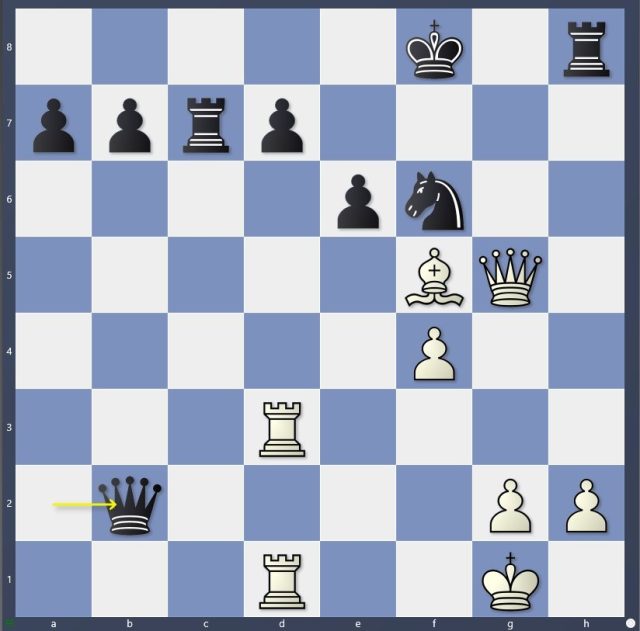
32.Rd4! (decisively cutting off the black Queen’s return to defense) 32…Ne8 33.Bg6! (and three! Threatening, among others, 34.Qd8) 33…Qa3 34.Qe5 Rg8 35.Bxe8 Rc2 (35…Qf3 would have been met with the same response) 36.Bg6!. The final touch! The only winning move, but it forces resignation, since 36…Rxg6 37.Qb8+ leads to mate.
ABDUSSATOROV-MVL (Tie-breaker)
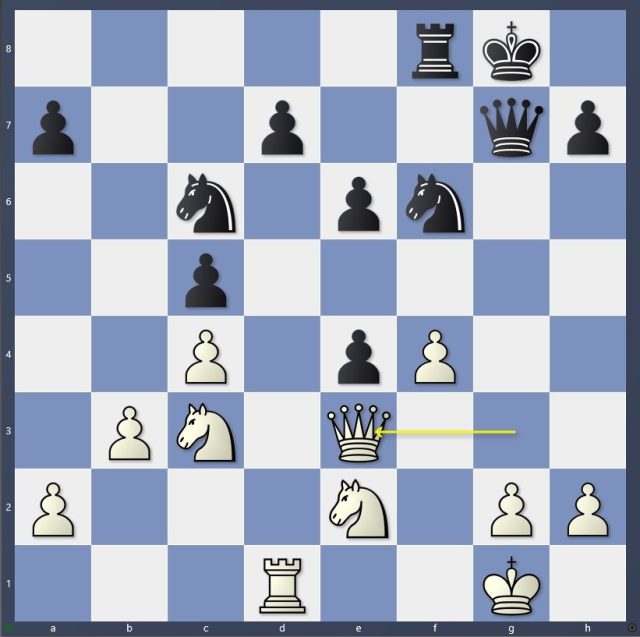
White is completely dominant and will win a pawn, but after 23…Ng4, you have to choose which one to take. 24.Qxc5? (wrong pick! Black had no compensation worthy of the pawn after the simple 24.Qxe4) 24…Rf5! (a cold shower. Black’s Queen can no longer control e3 and white has to give the exchange) 25.Qd6 Ne3 26.g3 and after a few more skirmishes, the game ended in a draw.
FREESTYLE KARLSRUHE
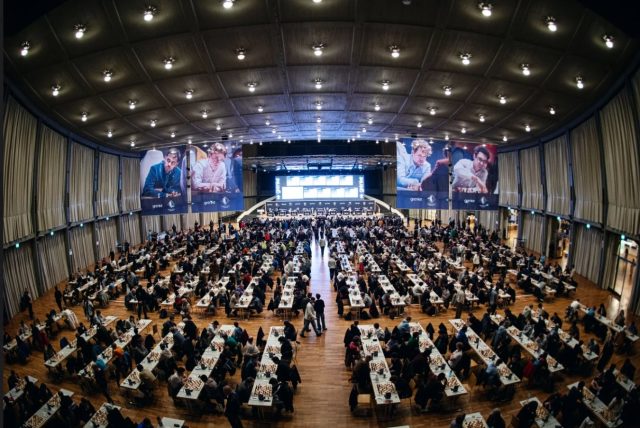
PASTAR (2359)-MVL
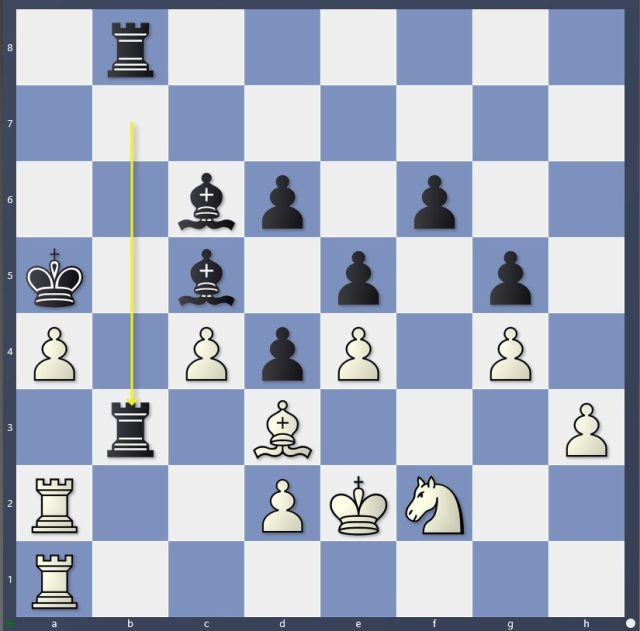
After resisting for a long time, the Bosnian IM finally collapsed! 58.Nh1? (after any move from the Ta1, everything was still to be done for black) 58…Rxd3! 59.Kxd3 Rb3+ 60.Ke2 (60.Kc2 Rxh3 61.d3 would have forced black to find 61…Rf3!, dominating the Nh1 and preventing any counterplay based on Rf1) 60…Bxe4 61.Nf2 Bf3+ 62.Ke1 e4 and the black steamroller wins (0-1, 76 moves).
FEUERSTACH (2458)-MVL
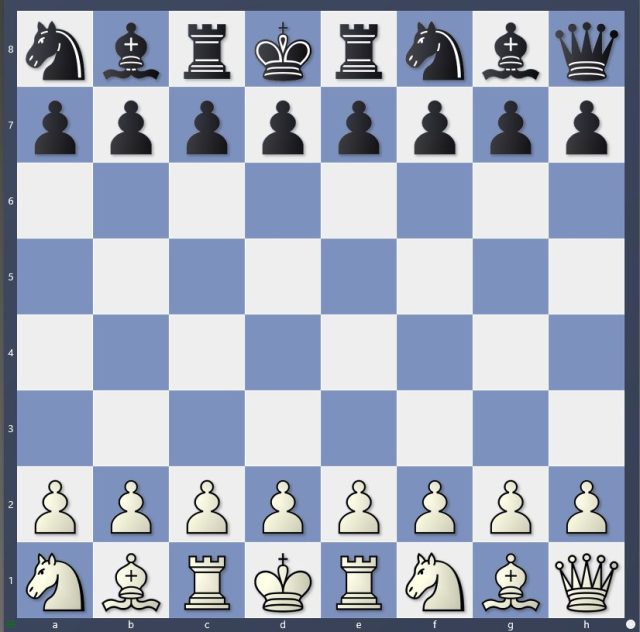
An example of a game that can go wrong right from the start!
1.0-0-0 g6 2.d4 f5 3.h4?! (a first step in the wrong direction) 3…c5! 4.g3? (abandoning the center won’t bring the expected results) 4…cxd4 5.f4 e5! 6.Qxb7? (white makes his case worse) 6…Nb6 7.e4 fxe4 8.Qxe4 Bd5 9.Qe2 Ne6! 10.fxe5 0-0 and white’s position is already a field of ruins (0-1, 19 moves).
MVL-MENDONCA (2643)
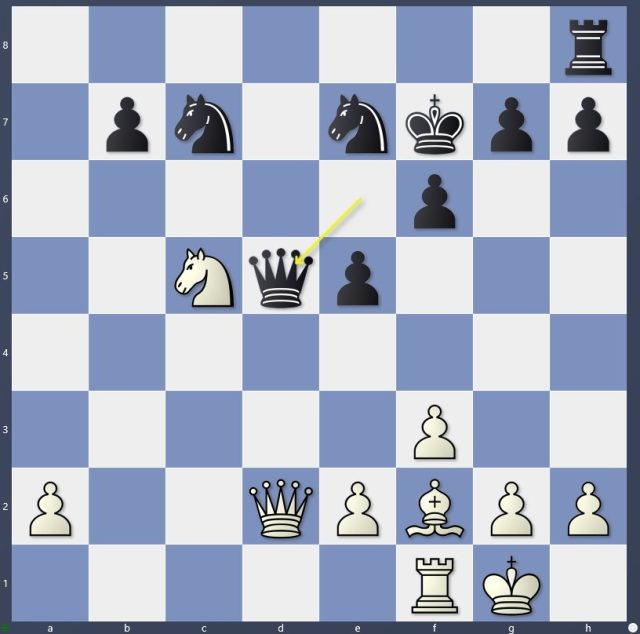
The game of the last round which, as is often the case in Opens, turns out to be decisive. Despite the symmetry, white is better as his pieces are more active, better developed, and black’s King is not completely serene on f7. But you have to be very precise to prevent black from equalizing. 21.Qc2? (and this move, played too quickly, is not precise! It was necessary to play 21.Qb2! which prevented liquidation, because if black reacts as in the game with 21…Ra8 22.a4 Ne6, he loses after 23.e4 Qc6 24.Nxe6 [which is not possible with the Queen on c2] 24…Qxe6 [24…Kxe6 25.Qb3+ Kd7 26.Qf7 and black King’s ride won’t end well] 25.Qxb7 Rxa4 26.Bc5 Rc4 27.Qa7 and Black won’t free himself from the pin. After 21.Qb2!, black should have defended an endgame a pawn down, which occurs after 21…Ne6 22.e4 Qc6 23.Qb3 b6 24.Nxe6 Qxe6 25.Qxe6+ Kxe6 26.Rb1!) 21…Ra8 22.a4 Ne6 23.Rd1 Qc6 24.Qb3 b6 25.Ne4 Qxa4! the move that had escaped me, and which forces an immediate draw after 26.Nd6+ Kf8 27.Qxa4 Rxa4 28.Bxb6.
It’s impossible to conclude these lines on Freestyle without highlighting the historic performance of Magnus Carlsen, who won both tournaments (that’s routine 😊 ), and who achieved an extraordinary 9/9 in the Karlsruhe Open; superlatives are in short supply…
And now: back to the Grand Chess Tour
Next stop for me: the Grand Chess Tour. Back to « normal chess », with the Warsaw Rapid & Blitz (April 26-30), followed by a Classical tournament in Bucharest (May 7-16). This is one of my main objectives of the year, with the obvious aim of finishing in the top 3 of the circuit and, why not, finally winning the GCT, after so many second places over the last 10 years!
Maxime’s games in Paris :
Maxime’s games in Karlsruhe :
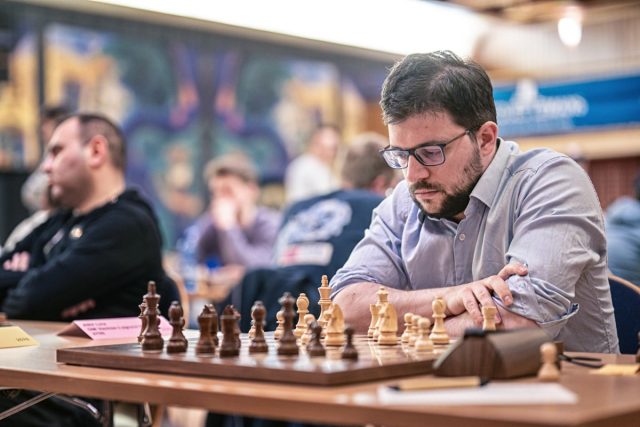
Just before starting his sequence of Freestyle tournaments, Maxime had spent a few days in Carinthia, in the south of Austria, to compete in the final phase of the National Team Championship. He and his comrades from the Linz club won the competition for the third year running, this time by a considerable margin. It has to be said that, with a team including Mvl, Mamedyarov, Maghsoodloo, Sarana, Esipenko and Bacrot, the bar was set far too high for the competitors. However, aware that his team was open to criticism, Club Director and President of the Austrian Chess Federation, Michael Stöttinger, decided to withdraw it from the competition next season. Stöttinger pointed out, though, that his team had been « built around GM’s who were old friends ».
